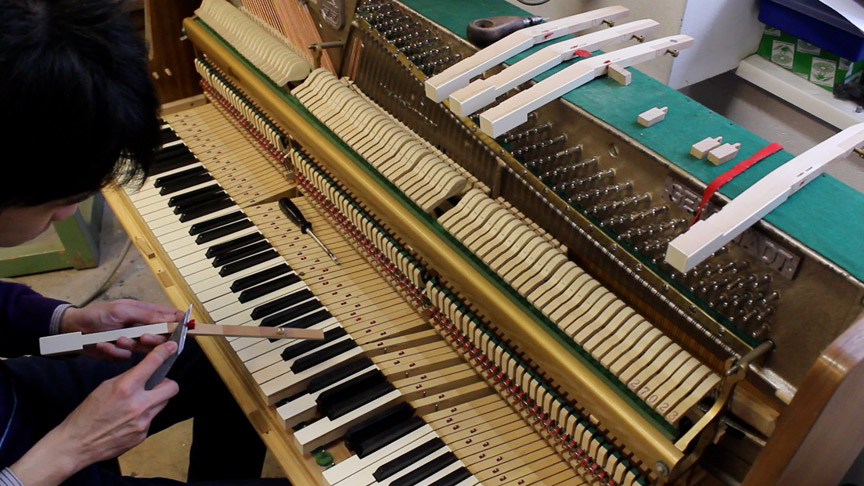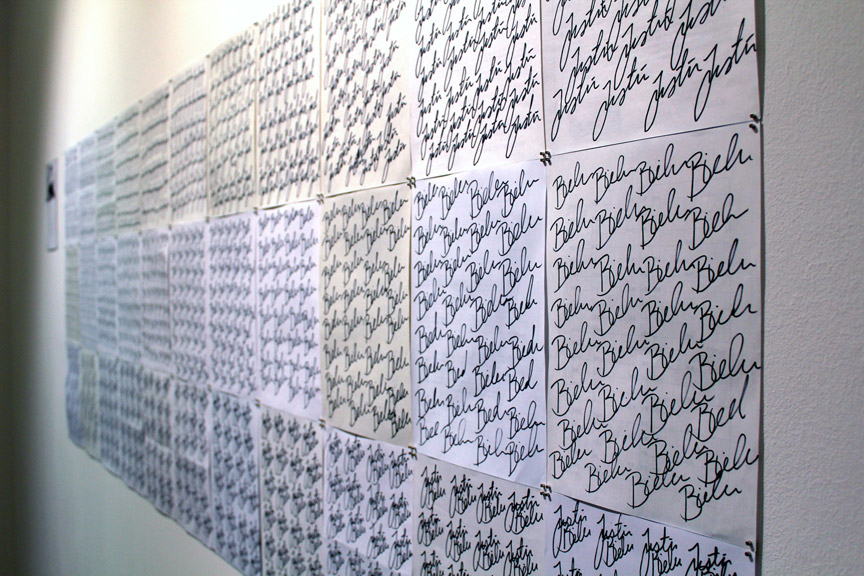Shows
Song Ming Ang’s “Cover Versions”


A piano, taken apart and reassembled; a Justin Bieber poster boasting a duplicated signature; a series of abstract watercolors premised on Belle and Sebastian album sleeves.
Song Ming Ang’s latest offering, “Cover Versions,” presented as part of Future Perfect’s ongoing Singapore Intensive program, demonstrated once more the chief thematic concern of Ang’s oeuvre: contemporary soundscapes and the broader social processes in which they are enmeshed. His earlier Be True to Your School (2010) documents a group of individuals in Japan attempting to recall their elementary school song many years after graduation. For his 2011 work, Yesterday – Mobile Karaoke, the artist outfitted a truck with a karaoke system and travelled to various locations in the Singapore hinterlands, providing suburbanites a chance to reacquaint themselves with their favorite hits of yesteryear.
The show, which closed November 11, continued this trajectory, interrogating the contexts of music-making in an age of mechanical reproduction. As if in an attempt to restore art’s effaced aura, which Walter Benjamin famously characterized as “the uniqueness of a work of art . . . inseparable from its being imbedded in the fabric of tradition,” the three projects on display here self-consciously reimagine procedures of craft, restoring to mass-manufactured products a sense of the manual, the expressive, the auratic. Take Justin (2012), for instance. What looks like Bieber’s signature, a sinuous, silver contour on a poster of the teen superstar, is revealed to be little more than an artistic intervention; juxtaposed next to it are Ang’s exhaustive efforts at perfecting Bieber’s autograph, rehearsed over and over in various forms. The work, then, puts two contradictory elements in dialogue. On the one hand, the image of the singer—his hands reaching up to pop the collar of his jacket, an all-too-routine signifier of "cool"—speaks to the cult of celebrity, and a visual culture tailored for popular consumption. On the other, the artist controverts the logic of mass production by gradually, meticulously mastering a singular act, appropriating the mark of someone else’s individuality through assiduous practice, as opposed to industrialized means.


Stop Me If You Think That You’ve Seen This One Before (2011) features a row of vinyl records by the Glaswegian band, Belle and Sebastian. Perched above each is a circle rendered in watercolor, in a hue that parallels the predominant tint of the corresponding sleeve design. The work is an explicit homage to British artist Jonathan Monk’s Stop Me If You Think That You've Heard This One Before (2003), which executed a similar strategy with album covers from The Smiths. Particularly salient in this case, though, is the fact of Ang’s painterly gestures. Each sphere bears the marks of varying transparency values: the grey circle of Tigermilk, for one, Belle and Sebastian’s debut record, resembles a lunar terrain, the chromatic texture of its surface achieved by gradated shades of watercolor stains. These function as material traces of the artist’s hand. Ang’s visible brushwork here, in contrast to the photograph reproduced on the album cover, is a testament to the physical process of painting, of building up shapes and fields of color in two dimensions, stroke by stroke—a tradition of artistry sidestepped by recording technology.
Parts and Labour (2012) most clearly highlights this tension between the manual and the mechanized. A piano sits in one corner of the gallery space, looking for all the world like that Duchamp-ian platitude, the found object. The video on the opposite wall, however, belies first impressions: it depicts the four months Ang spent in a workshop taking the instrument apart, and putting it back together again in full working condition. In an interview in the video, Ang remarks, “I’m really interested in craft and technique . . . and I have a lot of respect for craft.” The documented exercise of deconstruction and re-assemblage, not unlike the sedulously simulated autograph or the painterly brushstroke, emphasizes punctilious, painstaking labor. It reintroduces the viewer to the personality behind the piano, the painting, the practiced inscription; say hello to the artist.







